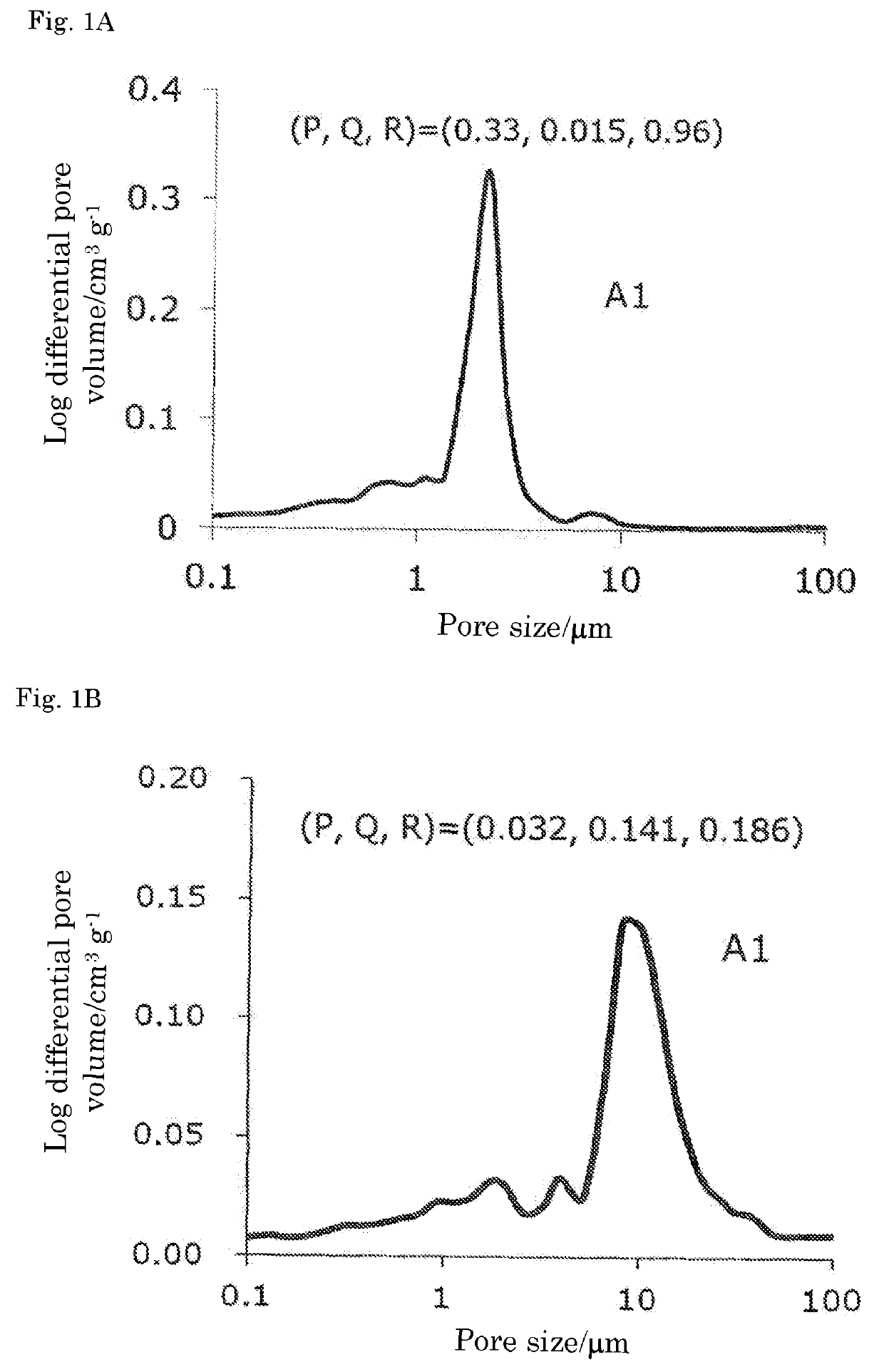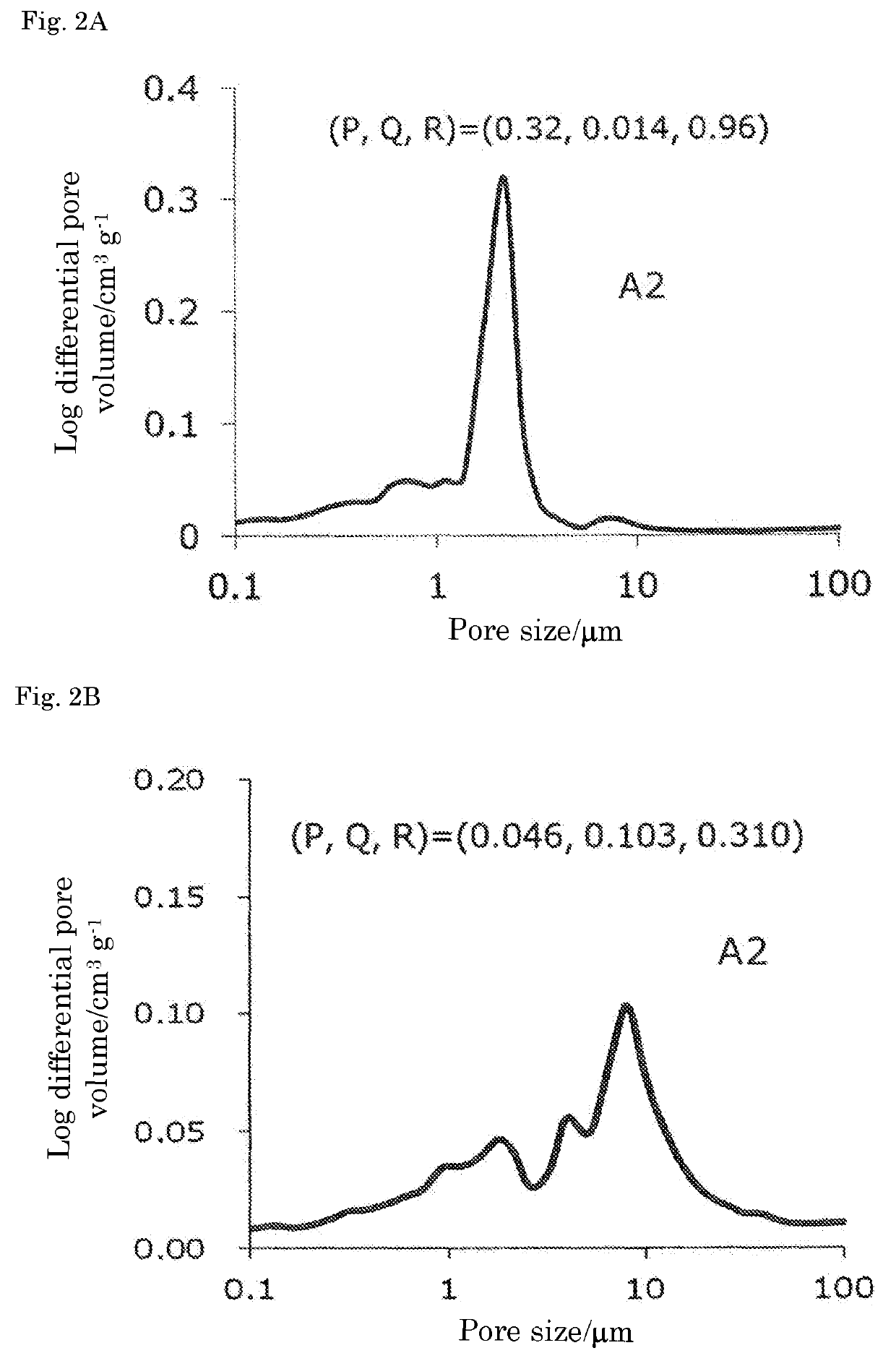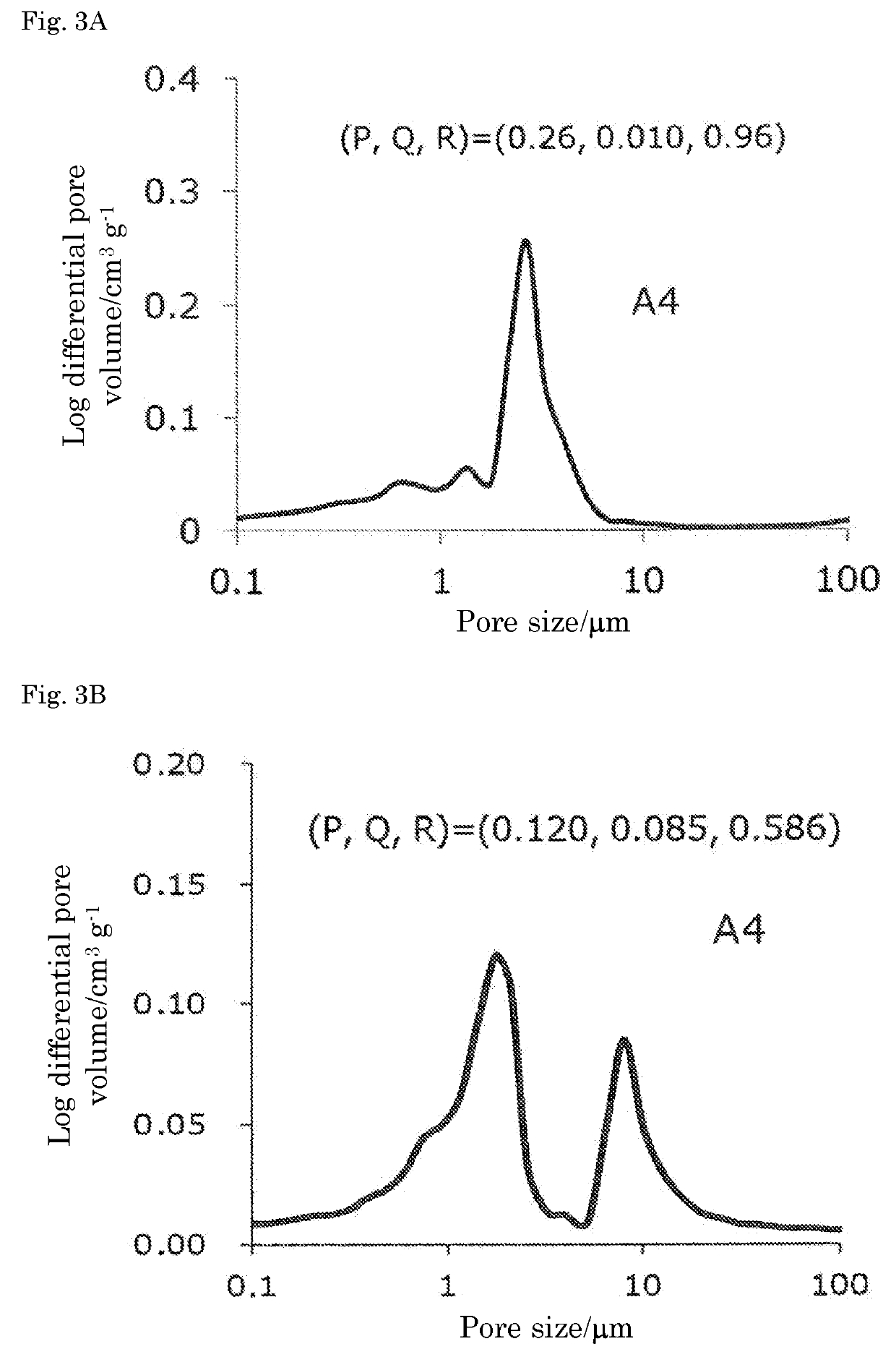Lead-acid battery
a lead-acid battery and battery technology, applied in the field of lead-acid batteries, can solve the problems of reducing the discharge characteristics of low-temperature hr lead-acid batteries and remarkably increasing so as to prevent the increase in the amount of liquid reduction
- Summary
- Abstract
- Description
- Claims
- Application Information
AI Technical Summary
Benefits of technology
Problems solved by technology
Method used
Image
Examples
Embodiment Construction
[0029]A lead-acid battery according to an embodiment of the present invention is provided with a negative electrode plate, a positive electrode plate, and an electrolyte solution, and the negative electrode plate includes a negative current collector and a negative electrode material. Here, when it is defined in a log differential pore volume distribution of the negative electrode material that
[0030]a) a region having a pore size of 1 to 3 μm is a P region,
[0031]b) a region having a pore size of 6 to 15 μm is a Q region,
[0032]c) a maximum value of the log differential pore volume in the P region is P, and
[0033]d) a maximum value of the log differential pore volume in the Q region is Q,
[0034]the “log differential pore volume distribution of the negative electrode material after 1220 cycles in a 75° C. 1′-10′ light-load life test” described below has the following features:
(Condition A)
[0035]The log differential pore volume distribution has a peak p corresponding to the maximum value ...
PUM
| Property | Measurement | Unit |
|---|---|---|
| temperature | aaaaa | aaaaa |
| pore size | aaaaa | aaaaa |
| pore size | aaaaa | aaaaa |
Abstract
Description
Claims
Application Information
 Login to View More
Login to View More - R&D
- Intellectual Property
- Life Sciences
- Materials
- Tech Scout
- Unparalleled Data Quality
- Higher Quality Content
- 60% Fewer Hallucinations
Browse by: Latest US Patents, China's latest patents, Technical Efficacy Thesaurus, Application Domain, Technology Topic, Popular Technical Reports.
© 2025 PatSnap. All rights reserved.Legal|Privacy policy|Modern Slavery Act Transparency Statement|Sitemap|About US| Contact US: help@patsnap.com



